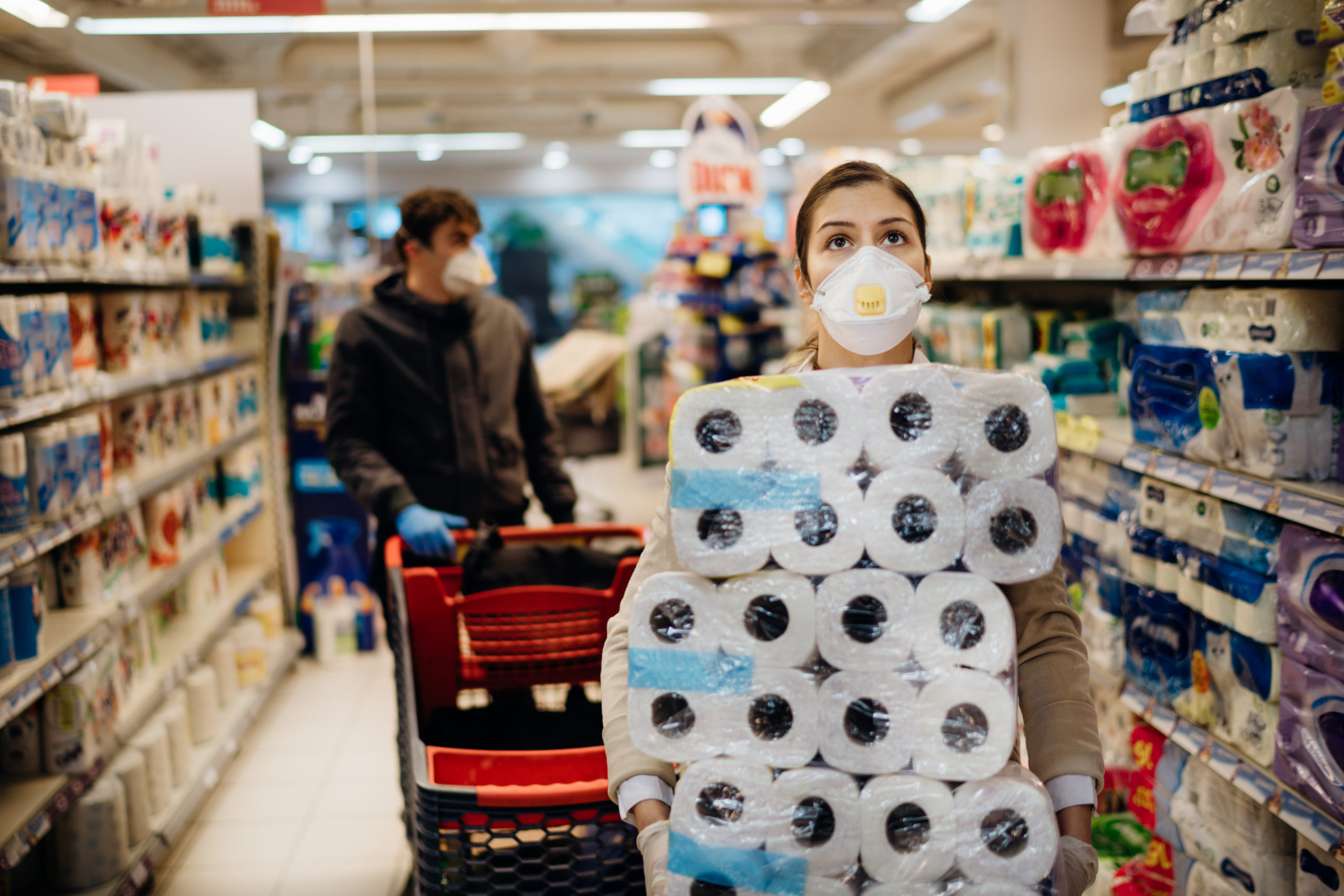When the pandemic reached the U.S. last winter, consumers rushed grocery aisles, “panic buying” toilet paper and other essentials to last them through quarantine. Restaurants were forced to shutter, leaving people to cook more meals at home as grocers scrambled to adjust supply chains to an abrupt change in consumer appetite.
With no clear end to the pandemic in sight, it’s unclear whether yesterday’s trends will become tomorrow’s habit. On one hand, some customers who’ve grown to appreciate the convenience of home delivery and curbside pickup could stick with online shopping post-pandemic. On the other hand, once this is over, will people really be interested in missing out on in-store experiences to spend time clicking around on their phone?
Meanwhile, grocers are looking long-term: beefing up their private label brands, culling their product lines, and investing in back-end operations to fulfill orders and manage inventory.
From food shortages to shipment delays, the pandemic’s ripple effects have jolted the grocery supply chain, upending the industry in fundamental and lasting ways. One year since the COVID-19 virus mushroomed worldwide, here’s an overview of the current state of the grocery industry.
Early Days
Just days into the pandemic, unprecedented volatility led to shortages on grocery shelves nationwide. But the problems started much higher up on the supply chain, long before customers reached the cash register.
The abrupt shutdown of the restaurant business left suppliers and distributors with unwanted inventory. They scaled back orders even as plants and factories struggled to meet consumer demand with a reduced workforce. Ultimately, stores and shoppers were left to grapple with the shortage.
From pumpkin puree to paper products, the availability of kitchen staples fluctuated at the retail level. For high-demand items in short supply, like toilet paper and paper towels, some grocers even restricted customers’ purchases. Others chose to control supply artificially by raising prices. Disruptions in manufacturing and distribution ended with angry shoppers leaving stores empty-handed.
Customers decamped to the Internet to find that the same supply problems persisted. Along with them came other challenges including incurring high service fees, not being able to get delivery slots, and receiving food of poor quality.
What’s Happening Now
A year later, COVID-19’s unexpected disruptions to the grocery supply chain continue to affect profitability and customer satisfaction. Retailers are more keenly aware on the importance of risk-proofing their operations than ever before.
That’s because living through a black swan event like COVID-19 changes people. It changes businesses. And between last summer’s civil unrest and the recent winter storms in Texas, it’s clear that when the unexpected hits, retail is often affected. Preparedness in the face of supply chain disruption is key to survival.
These days, even traditional grocery chains that have been resistant to fully digitize operations are finding they must embrace technology quickly. The key to rebounding from future black swan events is to become more agile and spot potential risks before they happen.
Many are finding renewed interest in their private label products once consumers discovered their go-to brands in short supply. This development that has the added boon of helping them maintain more control over their supply chain, not to mention a little boost to profit margins.
The preference for private label products is likely to persist, especially as customers get used to their lower prices. Behemoths such as Trader Joe’s, Costco, and Target – whose Good & Gather food brand has topped $2 billion in sales last year – are betting on a permanent shift in consumer behavior.
Other grocers will continue to cull their product assortment to gain control over their supply chains. Chicago-based IGA Inc. found that selling fewer SKUs at its 1,100 U.S. stores could lead to greater efficiency throughout the entire supply chain. Forced to trim its product mix during the pandemic, the grocer found it could improve sales, inventory, and profits.
What’s Next for Grocery Supply Chains
In the post-pandemic world, meeting this new consumer demand will require grocers to monitor operations in real-time, from the inventory on their shelves to the number of employees dispatched to fill online orders. Technology that gives insight into what’s selling in real-time can help match supply with demand more quickly. Blockchain and artificial intelligence especially can leverage this data to foster a more agile grocery supply chain.
Some savvy players began investing heavily in developing the technology to improve forecasting just prior to the pandemic. Venture capital firms invested more than $1.2 billion in grocery technology in 2019, more than double the total for 2017, according to PitchBook. But there’s still a long way to go.
Artificial intelligence and machine learning applications, for example, can help automate operations at warehouses, fulfillment centers, and stores, all of which play a central role in facilitating home delivery and curbside pickup orders.
Meanwhile, grocers will also need to learn how to manage subscription and auto-replenishment orders, which are becoming increasingly popular with customers for staples like toilet paper and bottled water. Retailers who cannot keep pace with industry-leading technology such as Amazon Dash and Wal-Mart’s Easy Reorder risk falling behind.
The fallout from the COVID-19 virus over the past year has exposed fundamental weaknesses in the grocery supply chain. As more consumers turn to online or omnichannel shopping for their groceries, retailers’ ability to provide a seamless experience will be crucial to staying afloat.
Fortunately, the range of technology available to keep closer watch over supply and demand can help grocers thrive even in challenging times. From deploying artificial intelligence at fulfillment warehouses to tracking real-time supply on the aisle shelves, agility will be key to success.
CB4 helps leading grocers like Weis and Wakefern overcome disruptions that pop up in the last mile of the supply chain and hold back sales. Often, these sales blockers are easy to overcome once store teams know there’s a problem. To learn more about what we do and how we do it, check out our product overview for grocers.


